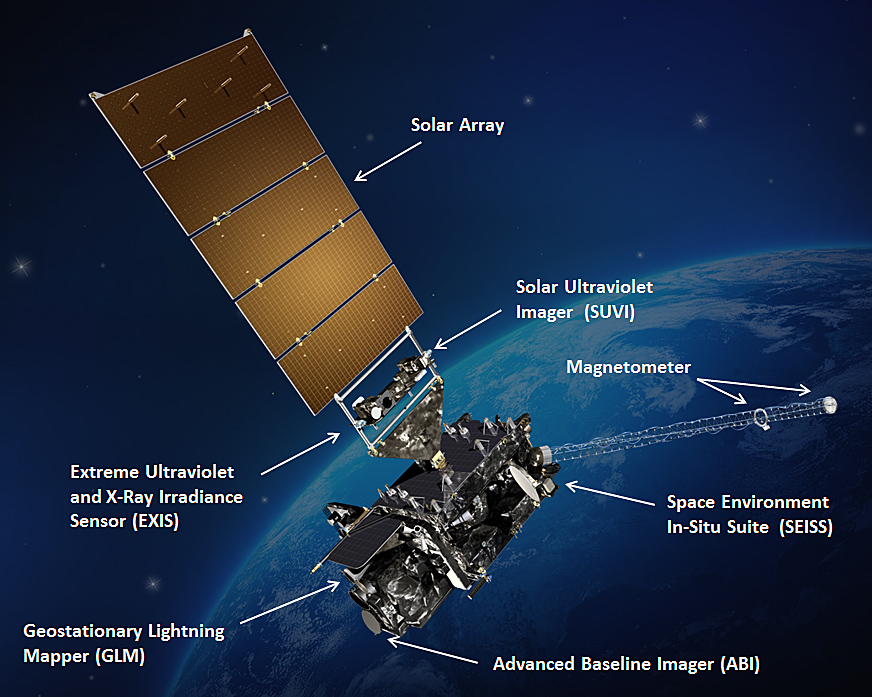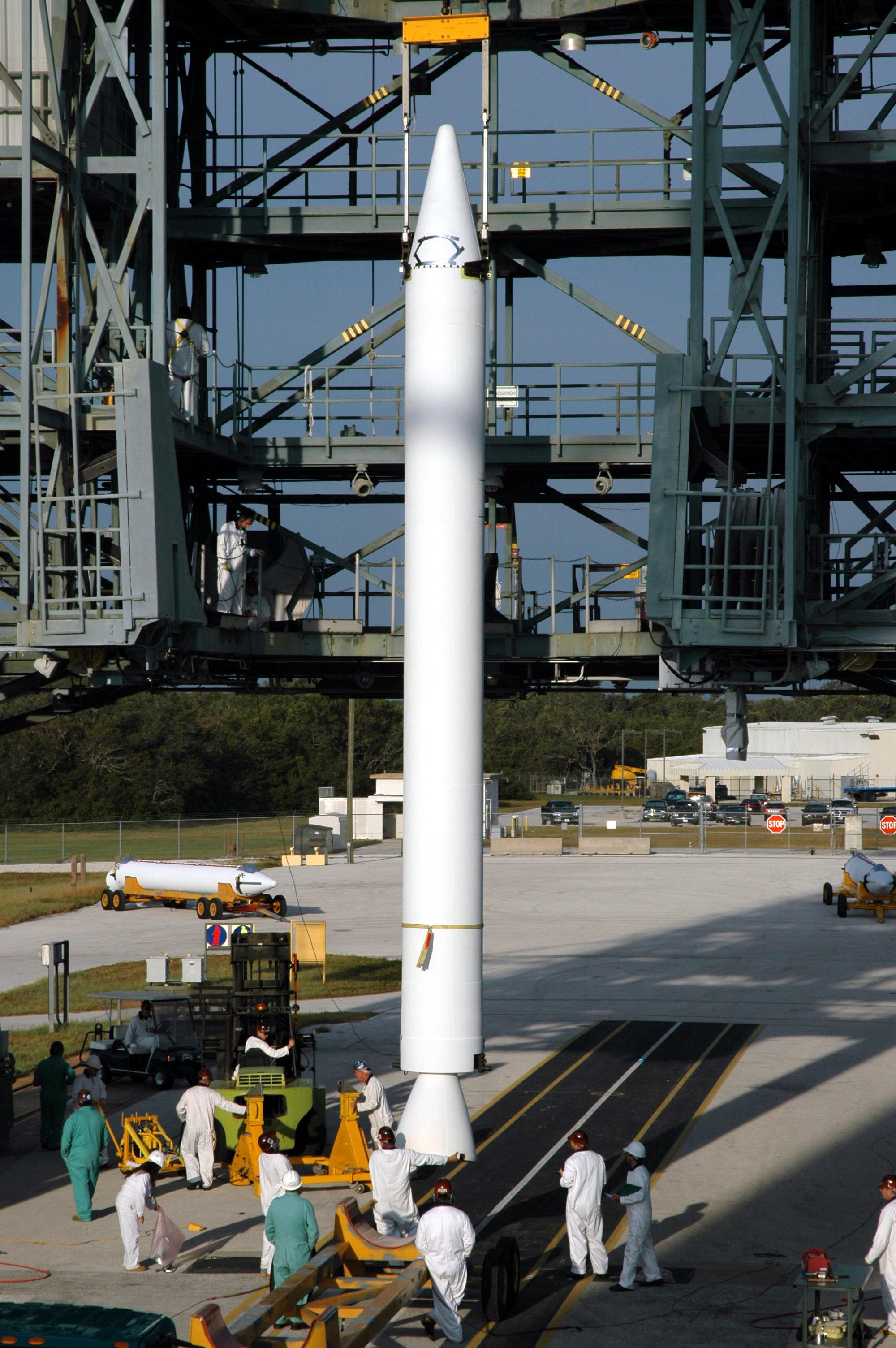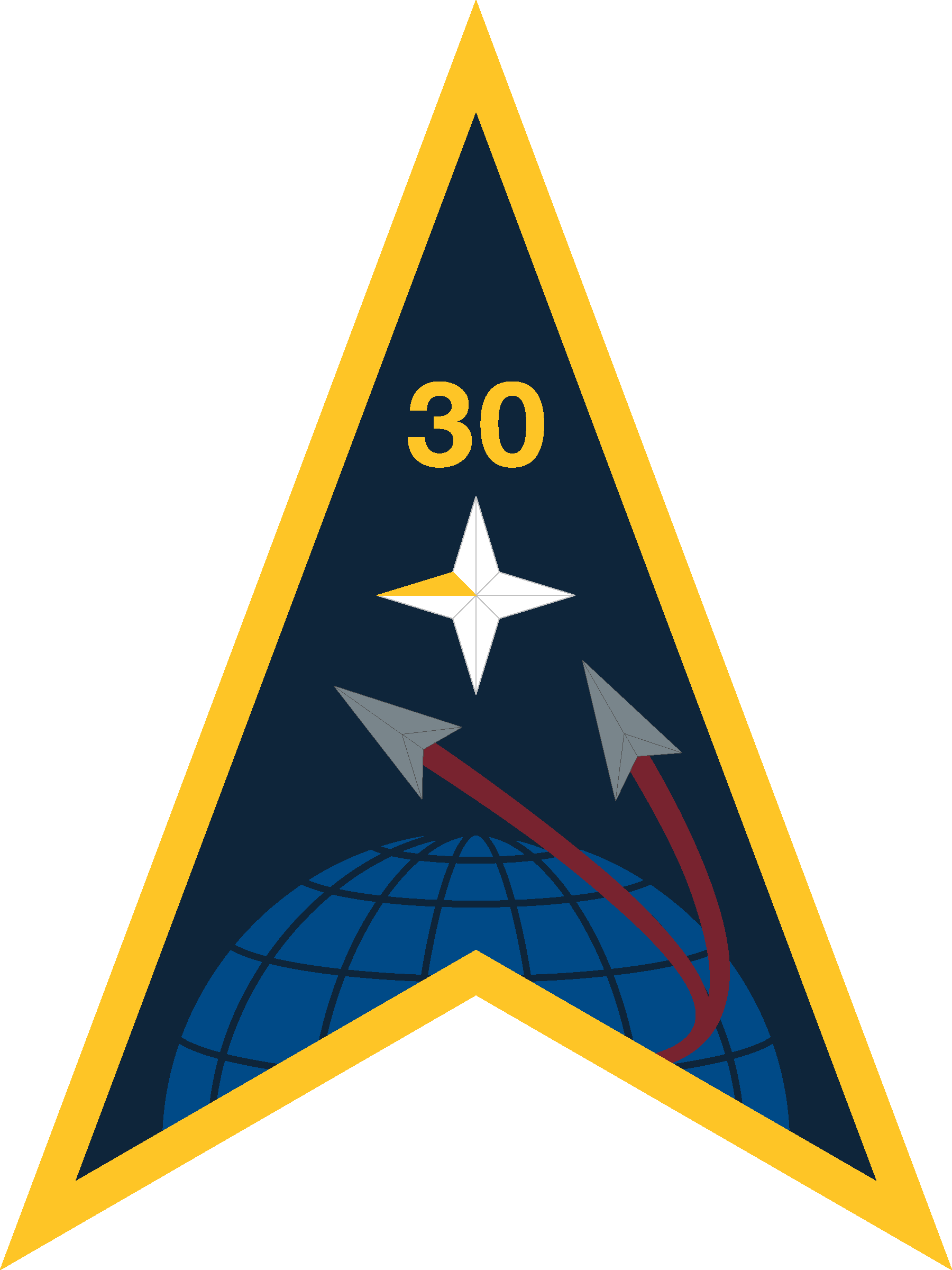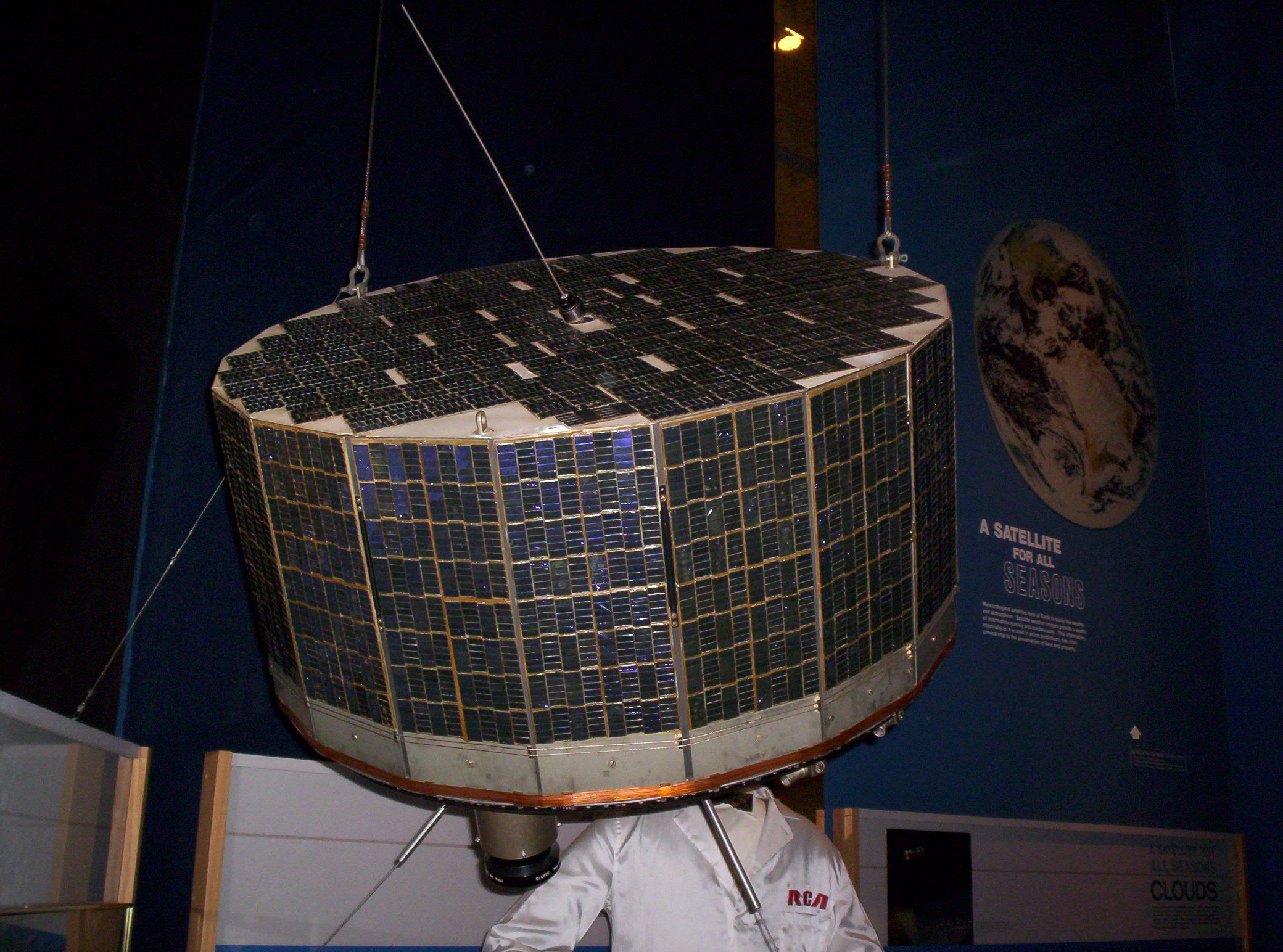|
Suomi NPP
The Suomi National Polar-orbiting Partnership (Suomi NPP), previously known as the National Polar-orbiting Operational Environmental Satellite System Preparatory Project (NPP) and NPP-Bridge, is a weather satellite operated by the United States National Oceanic and Atmospheric Administration (NOAA). It was launched in 2011 and is currently in operation. Suomi NPP was originally intended as a pathfinder for the National Polar-orbiting Operational Environmental Satellite System (NPOESS) program, which was to have replaced NOAA's Polar Operational Environmental Satellites (POES) and the U.S. Air Force's Defense Meteorological Satellite Program (DMSP). Suomi NPP was launched in 2011 after the cancellation of NPOESS to serve as a stop-gap between the POES satellites and the Joint Polar Satellite System (JPSS) which will replace them. Its instruments provide climate measurements that continue prior observations by NASA's Earth Observing System (EOS). Name The satellite is name ... [...More Info...] [...Related Items...] OR: [Wikipedia] [Google] [Baidu] |
Weather Satellite
A weather satellite or meteorological satellite is a type of Earth observation satellite that is primarily used to monitor the weather and climate of the Earth. Satellites are mainly of two types: polar orbiting (covering the entire Earth asynchronously) or geostationary (hovering over the same spot on the equator). While primarily used to detect the development and movement of storm systems and other cloud patterns, meteorological satellites can also detect other phenomena such as city lights, fires, effects of pollution, auroras, sand and dust storms, snow cover, ice mapping, boundaries of ocean currents, and energy flows. Other types of environmental information are collected using weather satellites. Weather satellite images helped in monitoring the volcanic ash cloud from Mount St. Helens and activity from other volcanoes such as Mount Etna. Smoke from fires in the western United States such as Colorado and Utah have also been monitored. El Niño and its effects on wea ... [...More Info...] [...Related Items...] OR: [Wikipedia] [Google] [Baidu] |
Graphite-Epoxy Motor
The Graphite-Epoxy Motor (GEM) is a family of solid rocket boosters developed in the late 1980s and used since 1990. GEM motors are manufactured with carbon-fibre-reinforced polymer casings and a fuel consisting of HTPB-bound ammonium perchlorate composite propellant. GEM is produced by Northrop Grumman Space Systems. GEM boosters are used on the Atlas V and were previously used on the Delta II, Delta III, and Delta IV launch vehicles. A new variant, the GEM 63XL, flew as part of the Vulcan Centaur launch vehicle on 8 January 2024. Variants Active GEM 63 The GEM 63 was developed by Orbital ATK as a low-cost drop-in replacement for the Aerojet Rocketdyne AJ-60A solid rocket booster used on the Atlas V. Its overall dimensions are very similar to that of the motor it replaces. The Atlas V first flew with the GEM 63 in 2020 on the NROL-101 launch. The booster offers higher performance at about half the cost of the AJ-60A boosters formerly used on the Atlas V. GEM 63XL T ... [...More Info...] [...Related Items...] OR: [Wikipedia] [Google] [Baidu] |
RS-27A
The RS-27 (Rocket System-27) was a liquid-propellant rocket engine developed in 1974 by Rocketdyne to replace the aging MB-3 in the Delta. Incorporating components of the venerable MB-3 and the H-1 designs, the RS-27 was a modernized version of the basic design used for two decades. It was used to power the first stage of the Delta 2000, 3000, 5000, and the first model of the Delta II, the Delta 6000. The RS-27 was a modified Rocketdyne H-1 built to power the first stage of the Saturn I and Saturn IB and replaced the MB-3 engine that had been used on previous versions of the Delta launcher. NASA had a large supply of surplus H-1 engines in the early 1970s, as the Apollo program was ending. In addition to its main engine, the RS-27 included two vernier engines to provide vehicle roll control during flight. RS-27 was later developed into the RS-27A and RS-56. RS-27A The RS-27A is a liquid-fuel rocket engine developed in 1980s by Rocketdyne for use on the first sta ... [...More Info...] [...Related Items...] OR: [Wikipedia] [Google] [Baidu] |
California
California () is a U.S. state, state in the Western United States that lies on the West Coast of the United States, Pacific Coast. It borders Oregon to the north, Nevada and Arizona to the east, and shares Mexico–United States border, an international border with the Mexico, Mexican state of Baja California to the south. With almost 40million residents across an area of , it is the List of states and territories of the United States by population, largest state by population and List of U.S. states and territories by area, third-largest by area. Prior to European colonization of the Americas, European colonization, California was one of the most culturally and linguistically diverse areas in pre-Columbian North America. European exploration in the 16th and 17th centuries led to the colonization by the Spanish Empire. The area became a part of Mexico in 1821, following Mexican War of Independence, its successful war for independence, but Mexican Cession, was ceded to the U ... [...More Info...] [...Related Items...] OR: [Wikipedia] [Google] [Baidu] |
Vandenberg Space Force Base
Vandenberg Space Force Base , previously Vandenberg Air Force Base, is a United States Space Force Base in Santa Barbara County, California. Established in 1941, Vandenberg Space Force Base is a space launch base, launching spacecraft from the Western Range (USSF), Western Range, and also performs missile testing. The United States Space Force's Space Launch Delta 30 serves as the host delta for the base, equivalent to an Air Force air base Wing (military unit), wing. In addition to its military space launch mission, Vandenberg Space Force Base also hosts space launches for civil and commercial space entities, such as NASA and SpaceX. History United States Army Camp Cooke (1941–1953) In 1941, just before the United States entered World War II, the United States Army embarked on an initiative to acquire lands in the United States to be used to train infantry and armored forces. These areas needed to be of a varied nature to ensure relevant training. In March 1941, the ... [...More Info...] [...Related Items...] OR: [Wikipedia] [Google] [Baidu] |
National Polar-orbiting Operational Environmental Satellite System
The National Polar-orbiting Operational Environmental Satellite System (NPOESS) was to be the United States' next-generation satellite system that would monitor the Earth's weather, Earth's atmosphere, atmosphere, oceans, land, and near-space environment. NPOESS satellites were to host proven technologies and operational versions of sensors that were under operational-prototyping by NASA, at that time. The estimated launch date for the first NPOESS satellite, "C1" or "Charlie 1" was around 2013. Issues with sensor developments were the primary cited reason for delays and cost-overruns. NPOESS was a tri-agency program led by an Integrated Program Office (IPO) containing staff from the United States Department of Defense, US Department of Defense, National Oceanic and Atmospheric Administration, and NASA. NPOESS was to be operated by the NOAA/National Environmental Satellite, Data, and Information Service (NESDIS) / NPOESS Program Executive Office Flight Operations at the NOAA Satel ... [...More Info...] [...Related Items...] OR: [Wikipedia] [Google] [Baidu] |
NOAA
The National Oceanic and Atmospheric Administration (NOAA ) is an American scientific and regulatory agency charged with forecasting weather, monitoring oceanic and atmospheric conditions, charting the seas, conducting deep-sea exploration, and managing fishing and protection of marine mammals and endangered species in the US exclusive economic zone. The agency is part of the United States Department of Commerce and is headquartered in Silver Spring, Maryland. History NOAA traces its history back to multiple agencies, some of which are among the earliest in the federal government: * United States Coast and Geodetic Survey, formed in 1807 * Weather Bureau of the United States, formed in 1870 * Bureau of Commercial Fisheries, formed in 1871 (research fleet only) * Coast and Geodetic Survey Corps, formed in 1917 The most direct predecessor of NOAA was the Environmental Science Services Administration (ESSA), into which several existing scientific agencies such as the ... [...More Info...] [...Related Items...] OR: [Wikipedia] [Google] [Baidu] |
University Of Wisconsin–Madison
The University of Wisconsin–Madison (University of Wisconsin, Wisconsin, UW, UW–Madison, or simply Madison) is a public land-grant research university in Madison, Wisconsin, United States. It was founded in 1848 when Wisconsin achieved statehood and is the flagship campus of the University of Wisconsin System. The main campus is located on the shores of Lake Mendota; the university also owns and operates a arboretum south of the main campus. UW–Madison is organized into 13 schools and colleges, which enrolled approximately 34,200 undergraduate and 14,300 graduate and professional students in 2024. Its academic programs include 136 undergraduate majors, 148 master's degree programs, and 120 doctoral programs. Wisconsin is one of the founding members of the Association of American Universities. It is considered a Public Ivy and is classified as an R1 University. UW–Madison was also the home of both the prominent "Wisconsin School" of economics and diplomatic h ... [...More Info...] [...Related Items...] OR: [Wikipedia] [Google] [Baidu] |
Verner E
Verner may refer to: * Verner (name) Verner is a Scandinavian language, Scandinavian name of Germanic languages, Germanic origins from the given name ''Werner (name), Werner''. Verner is common both as a given name and a surname. It means "protector". People with the name Verner incl ..., a given name and a surname (including a list of people with the name) * Verner, Ontario, a town in Canada * Verner's law, historical sound change in the Proto-Germanic language * Verner Motor, a Czech aircraft engine manufacturer ** Verner JCV 360, a Czech aircraft engine design ** Verner VM 133, a Czech aircraft engine design See also * Werner (other) {{disambiguation ... [...More Info...] [...Related Items...] OR: [Wikipedia] [Google] [Baidu] |
Earth Observing System
The Earth Observing System (EOS) is a program of NASA comprising a series of artificial satellite missions and scientific instruments in Earth orbit designed for long-term global observations of the land surface, biosphere, earth's atmosphere, atmosphere, and oceans. Since the early 1970s, NASA has been developing its Earth Observing System, launching a series of Landsat program, Landsat satellites in the decade. Some of the first included Passive microwave sensor, passive microwave imaging in 1972 through the Nimbus 5 satellite. Following the launch of various satellite missions, the conception of the program began in the late 1980s and expanded rapidly through the 1990s. Since the inception of the program, it has continued to develop, including; land, sea, radiation and atmosphere. Collected in a system known as EOSDIS, NASA uses this data in order to study the progression and changes in the biosphere of Earth. The main focus of this data collection surrounds climatic science. Th ... [...More Info...] [...Related Items...] OR: [Wikipedia] [Google] [Baidu] |
Defense Meteorological Satellite Program
The Defense Meteorological Satellite Program (DMSP) monitors meteorological, oceanographic, and solar-terrestrial physics for the United States Department of Defense. The program is managed by the United States Space Force with on-orbit operations provided by the National Oceanic and Atmospheric Administration (NOAA). The (originally classified) mission of the satellites was revealed in March 1973. They provide cloud cover imagery from polar orbits that are Sun-synchronous at nominal altitude of . History Early in 1963 The Aerospace Corporation recommended that the U.S. Air Force develop a dedicated military meterological satellite, and the Defense Department agreed. The main emphasis would be on cloud-cover photography, but planners expected to add more sophisticated equipment when it became available. Later, when civilian weather satellites improved their capabilities and could satisfy most military requirements, the Defense Department continued to prefer a separate sys ... [...More Info...] [...Related Items...] OR: [Wikipedia] [Google] [Baidu] |








